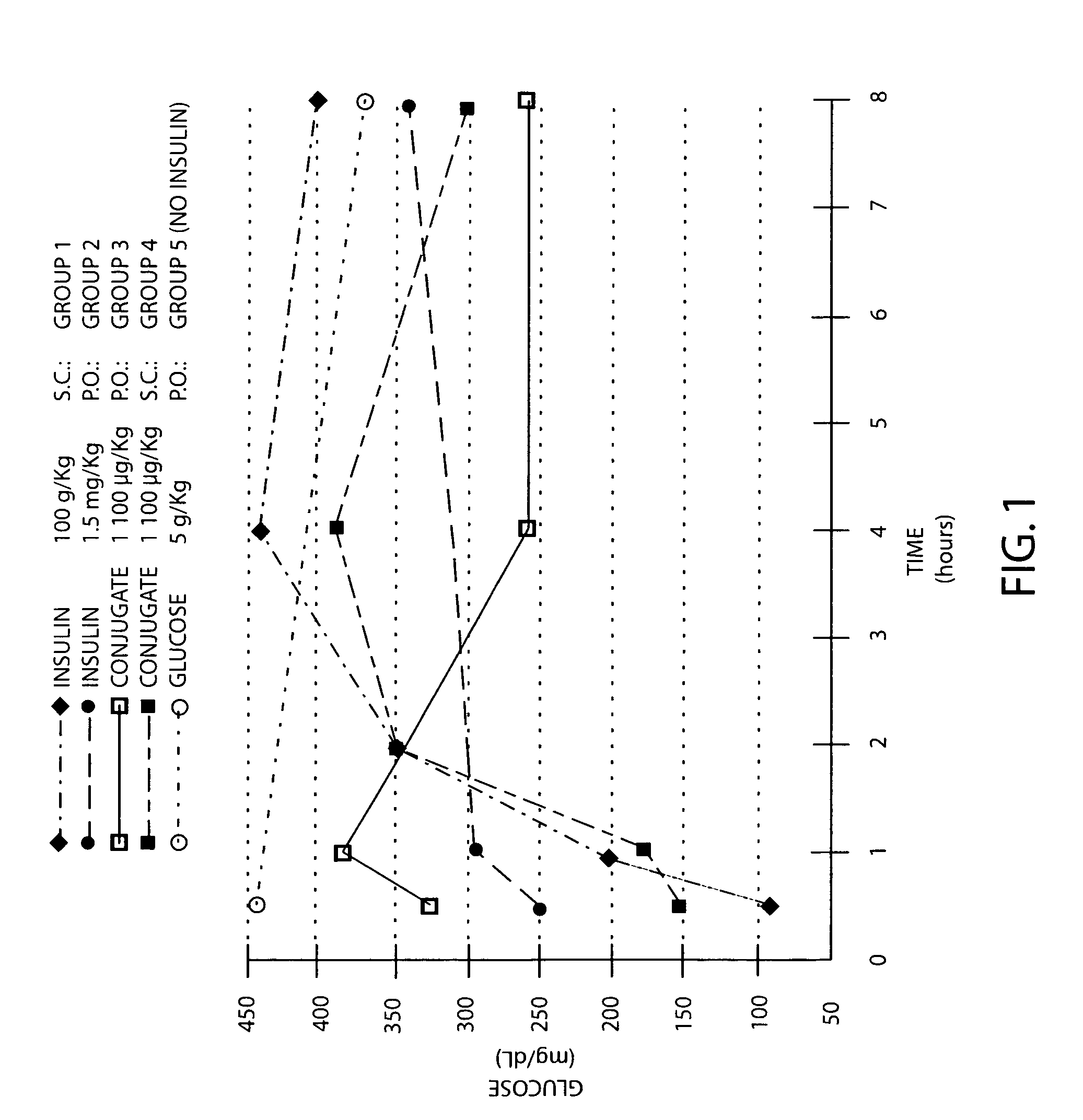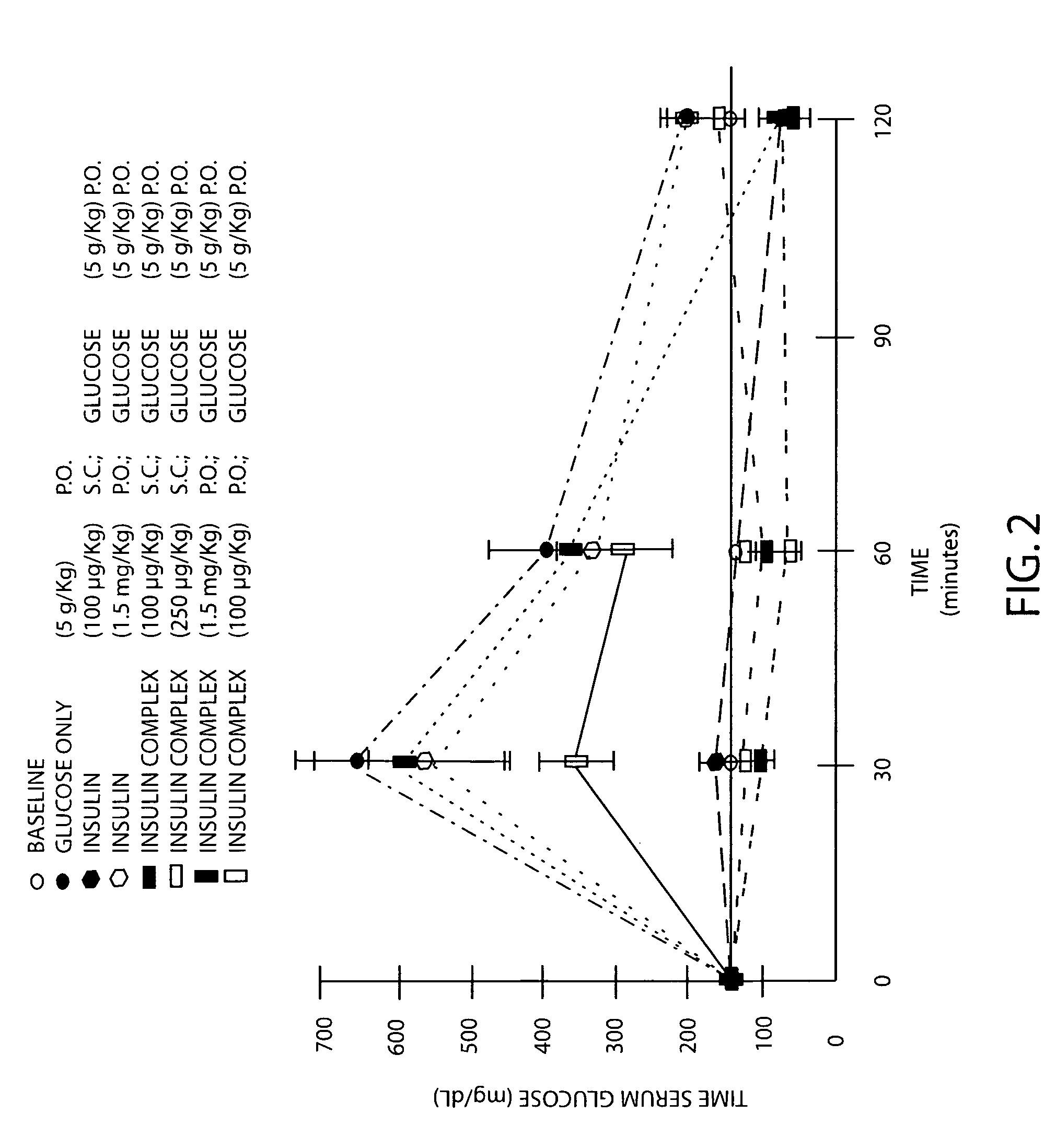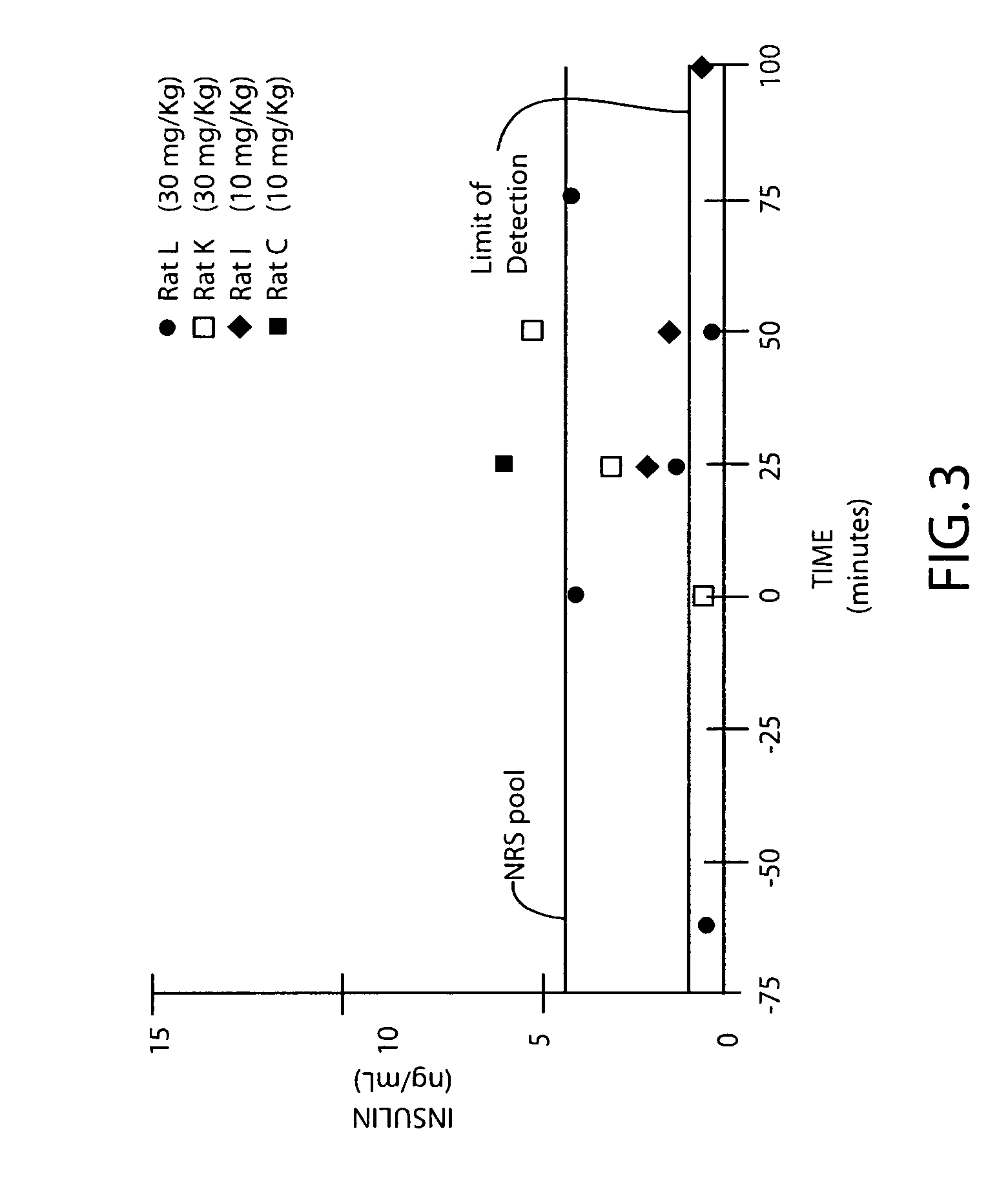Amphiphilic oligomers
a technology of amphiphilic oligomers and amphiphilic oligomers, which is applied in the direction of peptides, enzymology, and vehicular safety arrangments, can solve the problems of easy metabolization by plasma, the oral administration route of these substances is even more problematic, and the use of these therapeutic substances for their intended application, etc., to achieve better glucose reduction, improve absorption of hex-insulin mixture, and improve absorption
- Summary
- Abstract
- Description
- Claims
- Application Information
AI Technical Summary
Benefits of technology
Problems solved by technology
Method used
Image
Examples
example i
Conjugate 1
Polysorbate trioleate p-nitrophenyl carbonate
[0192] To a solution of p-nitrophenylchloroformate (0.8 g, 4 mmole) in 50 mL of anhydrous acetonitrile is added dry polysorbate trioleate (7 g, 4 mmole) followed by dimethylaminopyridine (0.5 g, 4 mmole). The reaction mixture is stirred at room temperature for 24 hours Solvent is removed under reduced pressure and the resultant precipitate is diluted with dry benzene and filtered through Celite. The residue is refrigerated overnight in dry benzene and the additional precipitate is removed by filtration. Solvent is removed under reduced pressure and residual benzene is removed by evacuation at low pressure to yield 6.4 g of polysorbate trioleate p-nitrophenyl carbonate.
Coupling of Insulin with Activated Polymer
[0193] To a solution of activated polysorbate trioleate (1 g) in aqueous mixture of dimethylsulfoxide (DMSO) or dimethylformamide (DMF) is added a solution of bovine insulin (50 mg) in 0.1 M pH 8.8 phosphate buffer....
example ii
Conjugate 2
[0194] The terminal hydroxyl group of polyethylene glycol monostearate is activated by reaction with p-nitrophenyl chloroformate as described above. To a solution of the activated polymer (1 g) in distilled water is added bovine insulin (80 mg) dissolved in 0.1M phosphate buffer, at pH 8.8. The pH is maintained by careful adjustment with 1N NaOH. After stirring for 3 hours, the reaction mixture is quenched with excess glycine and subjected to gel filtration chromatography using Sephadex G-75. Insulin / polymer conjugate is collected and lyophilized. Protein content is determined by Biuret assay, giving a quantitative yield.
example iii
Conjugate 3
Tetrahydro-2-(12-bromododecanoxy)-2H pyran
[0195] To a solution of 12-bromo-1-dodecanol (1 mole) in dichloromethane containing pyridinium p-toluenesulfonate (P-TSA) is added dihydropyran (2 moles). The reaction mixture is stirred for 24 hours and then washed twice with water and dried over anhydrous MgSO4. The dichloromethane is removed under reduced pressure. If necessary the resulting product is purified by chromatography on silica gel.
Coupling of Polyethylene Glycol to the Terahydropyran Derivative
[0196] The tetrahydropyran derivative described above, dissolved in dry benzene, is added to a solution of polyethylene glycol (1 mole) in dry benzene containing NaH (1 mole). The reaction mixture is stirred at room temperature for 24 hours. After that time the mixture is eluted through a silica gel column with benzene. Additional purification by column chromatography, if necessary, is performed. The protective tetrahydropyran group is removed by treatment with p-TSA at...
PUM
| Property | Measurement | Unit |
|---|---|---|
| Electrical resistance | aaaaa | aaaaa |
| Therapeutic | aaaaa | aaaaa |
Abstract
Description
Claims
Application Information
 Login to View More
Login to View More - R&D
- Intellectual Property
- Life Sciences
- Materials
- Tech Scout
- Unparalleled Data Quality
- Higher Quality Content
- 60% Fewer Hallucinations
Browse by: Latest US Patents, China's latest patents, Technical Efficacy Thesaurus, Application Domain, Technology Topic, Popular Technical Reports.
© 2025 PatSnap. All rights reserved.Legal|Privacy policy|Modern Slavery Act Transparency Statement|Sitemap|About US| Contact US: help@patsnap.com



